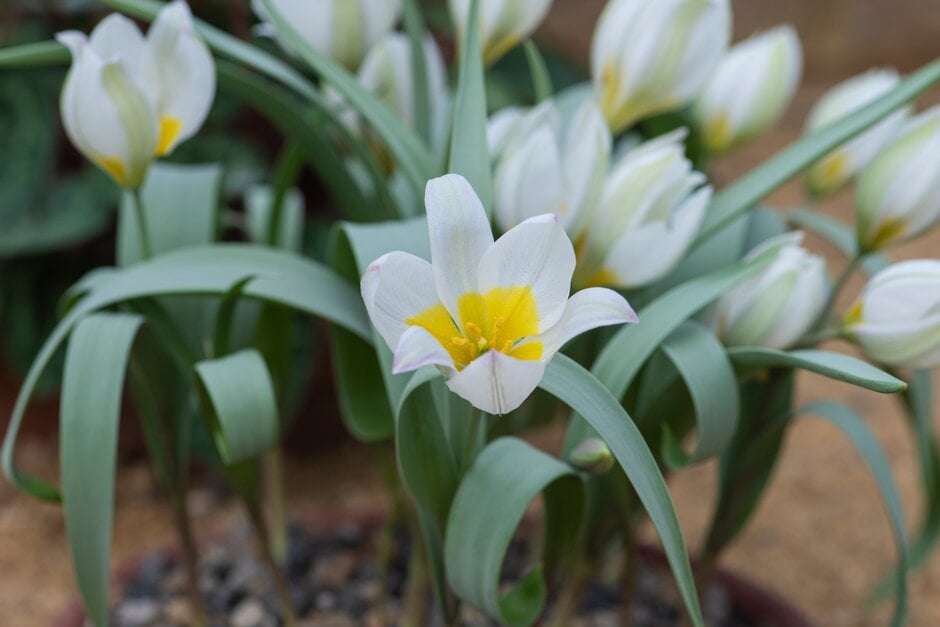Tulipa biflora (15)
two-flowered tulip
A perennial bulb 10cm tall, producing one or two grey-green leaves, and fragrant, star-shaped flowers 4cm across, borne singly or in twos or threes from late winter. The white petals are golden-yellow at the base and flushed grey on the undersides
Size
Ultimate height
Up to 10cmTime to ultimate height
2–5 yearsUltimate spread
0.1–0.5 metresGrowing conditions
Moisture
Well–drainedpH
Acid, Alkaline, NeutralColour & scent
| Stem | Flower | Foliage | Fruit | |
| Spring | White Yellow | Green Grey Silver | ||
|---|---|---|---|---|
| Summer | ||||
| Autumn | ||||
| Winter | White Yellow |
Position
- Full sun
Aspect
West–facing or South–facing
Exposure
Sheltered Hardiness
H5Botanical details
- Family
- Liliaceae
- Native to GB / Ireland
- No
- Foliage
- Deciduous
- Habit
- Clump forming
- Potentially harmful
- Harmful if eaten, skin allergen. Wear gloves and other protective equipment when handling. Pets: Harmful if eaten, skin allergen - for further information and contact numbers regarding pets, see the HTA guide to potentially harmful plants
- Genus
Tulipa are bulbous perennials with characteristic flowers, in a wide range of colours, in spring
- Name status
Correct
- Horticultural Group
- Miscellaneous tulips include all species and hybrids not otherwise classified
- Plant range
- Europe, Asia, Africa
How to grow
Cultivation
Needs a warm, sunny position with sharp drainage and protection from excessive wet, summer or winter. Best in a rock garden, raised bed or alpine house. See tulip cultivation
Propagation
Propagate by lifting and separating offsets
Suggested planting locations and garden types
- City and courtyard gardens
- Gravel garden
- Rock garden
- Cottage and informal garden
- Patio and container plants
Pruning
No pruning required
Pests
May be susceptible to slugs, aphids and stem and bulb eelworm; squirrels may eat the bulbs
Diseases
May be susceptible to tulip fire and bulb rot in poorly drained soil
Love gardening
Sign up to receive regular gardening tips, inspiration, offers and more
View our Privacy Policy
Get involved
The Royal Horticultural Society is the UK’s leading gardening charity. We aim to enrich everyone’s life through plants, and make the UK a greener and more beautiful place.
